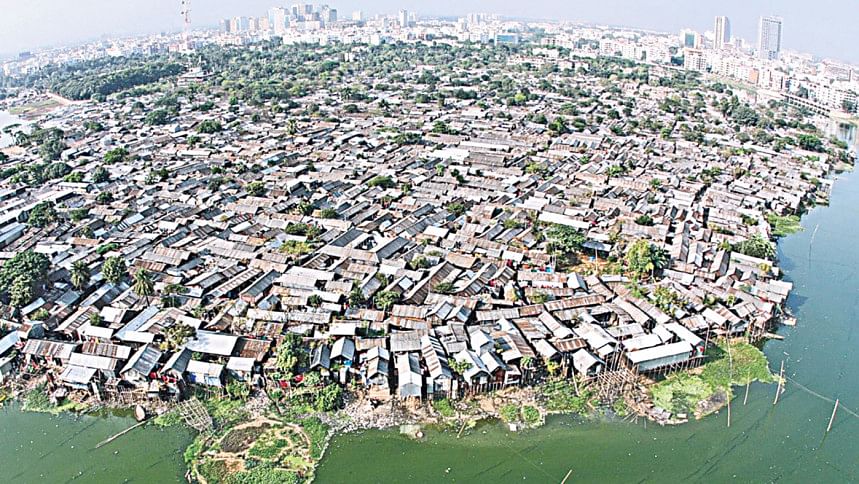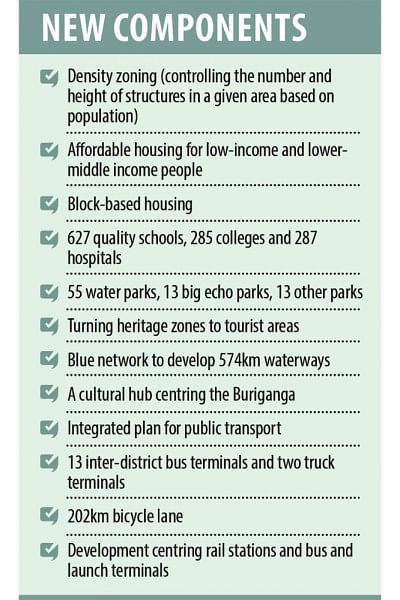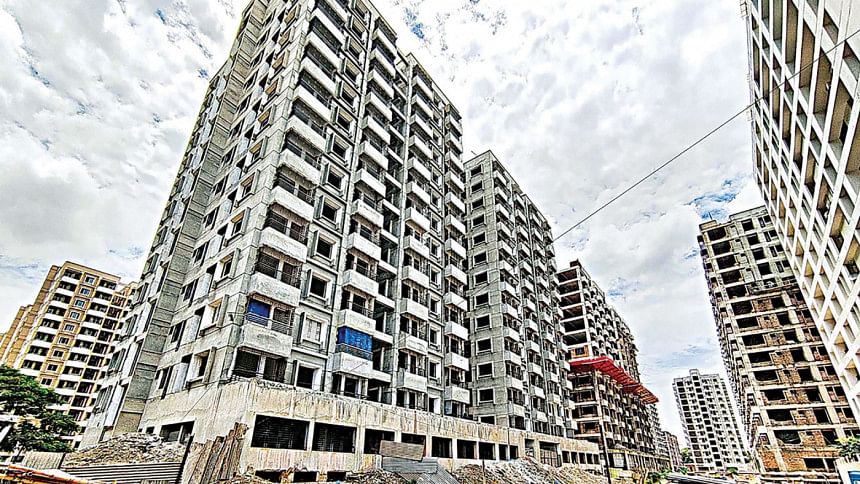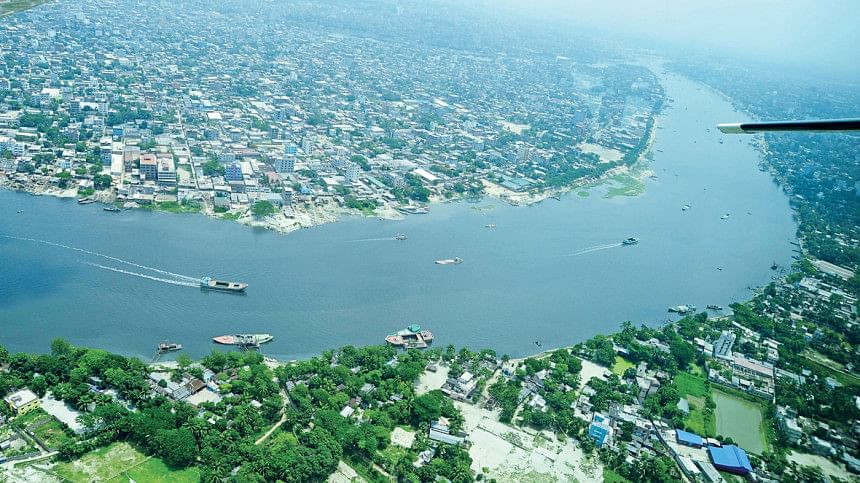New Detailed Area Plan For Dhaka: Potentials there, weaknesses too

The recently approved Detailed Area Plan (DAP) promises a better Dhaka by solving perennial problems of the capital, but it has legalised some residential areas developed in conservable flood-flow zones over the years, experts say.
There is a mention of a penalty, which is currently low, in line with Building Construction Rules for such structures, but no action has been recommended for filling up the flood-flow zones.
Such a move by the Rajuk, the implementing agency of DAP, will encourage others to follow suit, causing more harm to the city's environment, warned the experts.

"This is a huge weakness of Rajuk as well as the DAP…. Did they take decisions to make some quarters happy?" said Fazle Reza Sumon, president of Bangladesh Institute of Planners (BIP).
This is a huge weakness of Rajuk as well as the DAP…. Did they take decisions to make some quarters happy?
"Now other developers will be encouraged to construct buildings filling up flood-flow zones. They will try and protect the buildings for seven to eight years and eventually get those legalised without punishment," he said.
The DAP demarcates areas and guides land use, zoning, proper use of infrastructure and utility services.
On August 23, the government published the gazette notification for the 20-year DAP, which covers 1,528 square km of Rajdhani Unnayan Kartripakkha (Rajuk).
The DAP has many components including area-based school system constructing 627 quality schools, 285 colleges, and 287 hospitals; density zoning, block-based housing, low-cost housing, transit-oriented development and the blue network.
According to a 2019 study of BIP, individuals, businesses, real-estate developers, organisations, and even government agencies have gobbled up 1,072 acres (57 percent) of the 1,879-acre flood-flow zones in Dhaka metropolitan areas in this decade.

Till 2019 since the publishing of the gazette on the previous master plan, DAP-2010, the core city lost 3,440 acres out of 9,556 acres of flood-flow zones, water retention areas, and water bodies.
"This culture of impunity, the absence of provision for proper penalty or legal punishment, will also make the current DAP unimplemented," said Adil Mohammad Khan, former general secretary of the BIP.
The DAP has mentioned violating building construction rules but remains silent about land development in flood-flow zones, he said.
Joint Secretary of Bangladesh Paribesh Andolon Iqbal Habib said the Institute of Architects Bangladesh has already demanded the government incorporate their demands in the DAP, including a firm decision to prevent the change in the characters of flood-flow zones and agricultural land.
DAP Project Director Md Ashraful Islam said many areas were earlier identified as flood-flow zones, like Chandrima Udyan and adjoining places of Basila. By the time DAP-2010 was prepared, multi-storey buildings were already standing in those places.
"It is tough to recover these areas by demolishing the structures. In the latest DAP, we proposed these areas be marked as residential zones but did not legalise the structures. We have imposed a penalty for such buildings in line with the Building Construction Rules," he said.
The amount of penalty is currently low "but we have suggested increasing it", he added. "We have also recommended forming a committee to fix the penalty."

Asked how many flood-flow zones will be lost in the process, he said it is difficult to figure that out but it can be around five percent.
However, there are some positive elements in the master plant and their implementation will of course make the city a better place, experts also say.
The DAP has many components including area-based school system constructing 627 quality schools, 285 colleges, and 287 hospitals; density zoning, block-based housing, low-cost housing, transit-oriented development and the blue network.
To improve Dhaka's connectivity with nearby cities, DAP also proposes six metro rails, two bus rapid transit (BRT) routes, six elevated expressways, two main roads parallel to the Dhaka-Mymensingh highway, ring roads, circular waterways, five large regional parks, 55 water parks, 13 large eco parks (including Bhawal forest), and 13 other parks and playgrounds.
But a lot of challenges have to be overcome for the proper implementation of these components.
"Rajuk does not have the organisational capacity to implement the DAP. Strengthening its capacity and coordination with other organisations will be needed for proper implementation of the master plan," said Fazle Reza Sumon.
"They had proposed a lot of things but Rajuk does not have any working plan in the DAP to implement those proposals and they did not clarify who will implement what and how."
The authorities showed 220km for bicycle lanes but did not say anything clearly about non-motorised three-wheelers like rickshaws, he said.
Sumon pointed out some reasons why the authorities could not implement DAP-2010 properly: lack of necessary and effective initiatives, weak enforcement of law to prevent unauthorised construction, shortage of resources, lack of coordination among stakeholders, and inconsistencies in proposed policies.

 For all latest news, follow The Daily Star's Google News channel.
For all latest news, follow The Daily Star's Google News channel. 



Comments